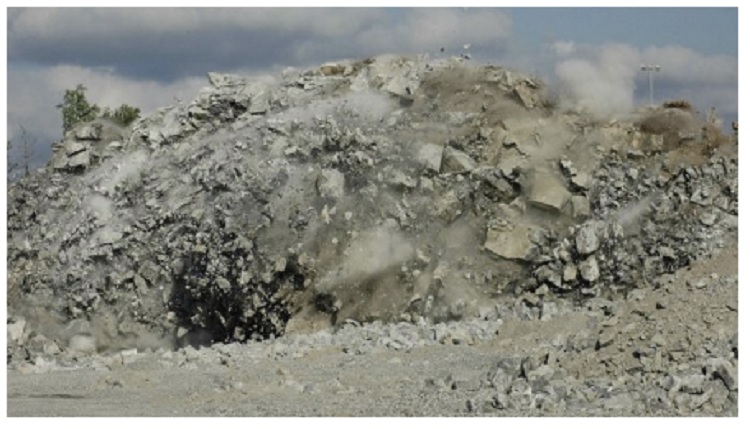This method statement provides the details of the materials, the equipment, the procedure and relevant documents related to the Rock Blasting activity, including the quality control verifications, the measurement verifications, and also the safety precautions to be implemented for this work.
Location of Works
The location of the rock blasting works will be limited to selected areas bound within the Right of Way (ROW) and the construction area obstruct by rock or boulder.
Materials
The major materials used for the rock blasting works include, but are not limited to the following.
a) Explosive
b) Electric Detonators
c) Ammonium Nitrate (depends to the site condition)
Other
a) Barricade Tapes
b) Warning Boards
c) Sand bags
d) Wire mesh
Equipment
The major equipment used for rock drilling and blasting works include, but are not limited to the following.
• Jack Hammers
• Air Compressor
• Siren
• Excavator/JCB
• Other minor tools
Manpower
Man Power used for rock drilling and blasting works include, but are not limited to the following.
• Driller
• Supervisor
• Blasting Forman
• Skilled labor
Safety Management and Control
Control of Fly Rock
In the areas where the fly rock needs to be controlled, the charged boulders will be covered using a wire mesh, sand Bags or tyres.
Drilling direction will be selected in accordance to avoid Rock flying.
Warning Procedure to the Resident, Workers and Any Other Parties
• Siren will be used before the blasting start.
• Closing of all entrance before blasting.
• Blaster or person in charge will confirm to unbarricade the area after blasting carry out.
Method and Procedures
Method and procedures for rock blasting works are as follows.
Before the commencement of the work, the Engineer will be notified of the areas where rocks are to be blasted.
Accordingly, the Engineer will inspect the area for approval before commencement of the works.
Rock Drilling
Rock drilling will be carried out by jack hammer.
Hole depth less than or equal 1m, 1 hole /one boulder if boulder <2m3
Hole diameter: 32mm to 39mm
Blasting Rocks
Blasting will be executed in accordance with existing laws and regulations. Relevant permissions will be obtained from the designated authorities before work start.
Approval from the authorities will be obtained for handling the explosives.
All blasting operations will be carried out under close supervision of the blaster and Safety supervisor. Only competent persons who have experience and knowledge in handling explosives will be appointed to take charge of the blasting operations at each blasting location
Inspection and Joint Survey
Before the commencement of work a request will be made to the Engineer to conduct a joint survey and measurements of the rock which are to be blasted.
Charging:
Dynamite will be used to charge holes.1m-depth hole will be charged with 0.125g
Dynamite and Electric detonators will be used to initiate the primer.
Hole charging and initiation
Dynamite piece with an electric detonator
Subsequently, the rest of the hole will gradually be filled with soil (particles not larger than 5mm) and slightly tamped with a lightweight timber or PVC pipe.
Protections will be introduced to control fly rock.
Electric detonators all leg wires are series connected and will be fired using an exploder.
Firing Time and Number of Holes Per Time
Rock blasting will be done between 8:00 hrs to 16:00 hrs in the week days except public holidays.
1) Number of Holes Per Time:
2) Using Dynamite
3) A maximum of 30 holes per time (refer to permit approval)
4) Using Electric Detonators
Quality Control
Several inspections and verifications will be carried out as described in the above method and procedures to ensure that the steps adopted are fully complied with during rock blasting as well
as the all steps will be taken to fully compliance with the authorities guideline.
All blasting work will be done with the approvals of relevant authorities.
Discover more from Method Statement Store
Subscribe to get the latest posts sent to your email.